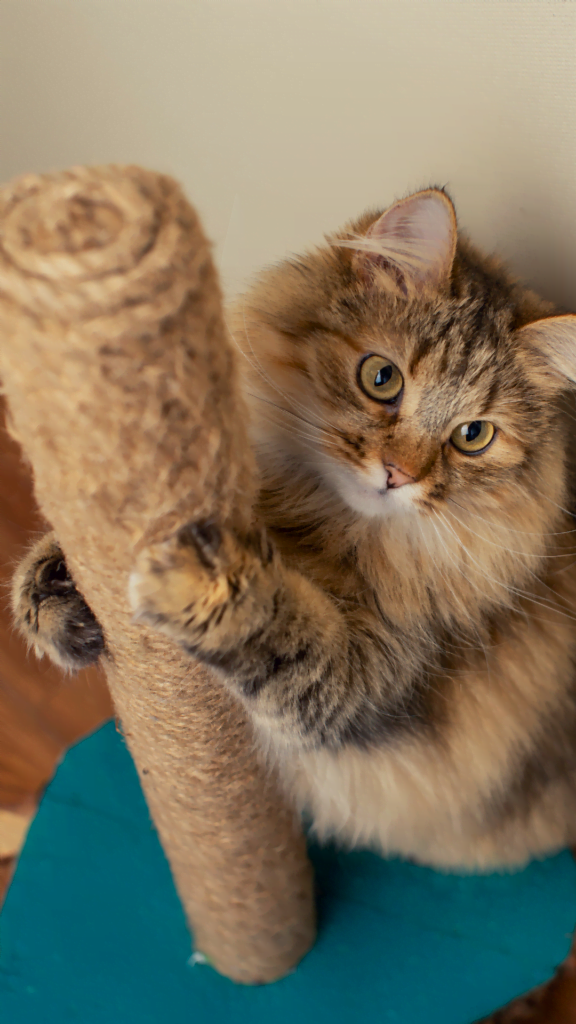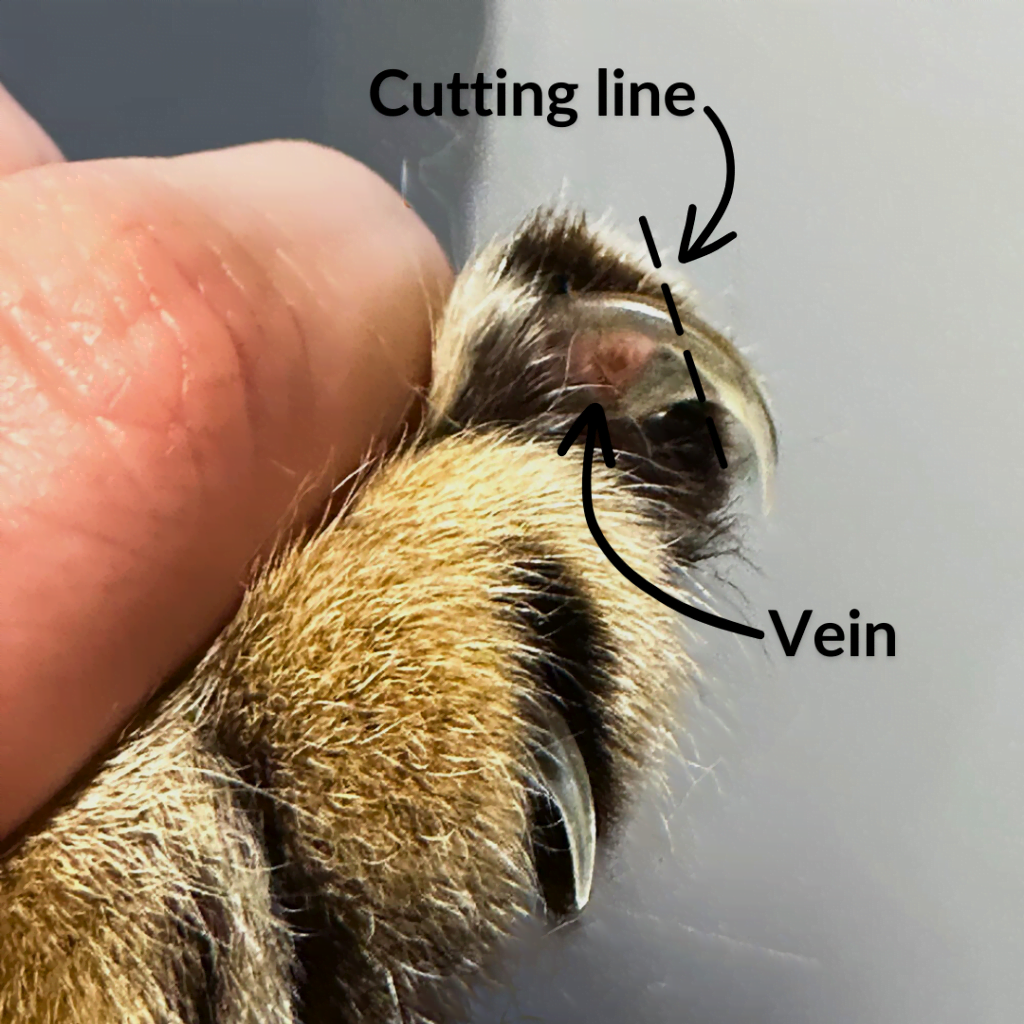Since the new Regulation Respecting the Welfare and Safety of Domestic Companion Animals and Equines is now in force, the declawing of cats is prohibited in Quebec. Are you wondering how to happily co-exist with “clawed” cats? Here are a few tips to help you live in peace with your sharp little feline.
1. Set up a scratching post

A scratching post is a must-have item for anyone with a feline housemate! Cats can use this generally upright-shaped object to satisfy their need to scratch and maintain their claws. But what are the criteria and how do you choose the right model?
The first step is to pick a solid, stable scratching post that’s high enough (at least 90cm tall) for your cat to stretch out completely when scratching. Made of cardboard, rope, wood, carpet, etc., the post should have a texture that’s appealing to your furry friend.
Some cats like vertical scratching posts, while others prefer horizontal models. Make sure you install the accessory in a place that’s easy to reach and close to where your cat usually likes to scratch (door frame, sofa, etc.). Kitty may enjoy scratching a “cat tree,” depending on its structure, material and location, or still prefer a separate post. It can be good to offer them several options. Once you’ve installed a scratching post, your cat will likely use it spontaneously!
If this isn’t the case, use positive reinforcement techniques to train your companion to scratch the desired spot. You can sprinkle the scratching post with dried catnip and place a toy or piece of string to attract them. Make it a habit to praise them verbally or, even better, use treats to reward their use of the scratching post.
If Kitty is slow to adopt the new object, cover the other areas of the house with an unpleasant texture (double-sided sticky paper, aluminum foil, bubble wrap, plastic wrap) or a pheromone-based spray. This will make these places less attractive to your cat, who will soon love their scratching post!
See the Éduchateur’s tips for proper scratching-post use.
2. Trim their claws regularly
One of the easiest ways to limit the damage a cat can do on furniture is to trim their claws regularly, ideally every 2 to 3 weeks. Claw trimming can be done at home (either yourself or by an in-home groomer), at a veterinary clinic or even free of charge at Mondou.
Trim your cat’s claws when they are relaxed, in a well-lit room, using a sharp claw clipper. Press gently on the pad of their paw to release the claw. The pink vein you can see through the claw is a sensitive area that must not be cut. Only cut the sharp end of the claw. And of course, reward your companion with their favourite treat afterward!

3. Install claw caps
Another option is claw caps. These small, soft vinyl caps are applied to each claw with a non-toxic glue. Nail caps adhere for around 4 to 6 weeks in adult cats, and 2 to 3 weeks in kittens. However, it’s important not to let a capped cat outdoors, as the accessory will prevent them from defending themselves or climbing out of the way of danger. Ask your veterinary clinic for more information about this product.
Why do cats need to scratch?
Scratching is a natural and instinctive cat behaviour. It allows felines to sharpen their claws and remove old sheathing, but it’s more than a manicure! Scratching visually and olfactorily marks their territory, and thus serves as a means of communication, but it’s also a way for them to stretch out their entire body.
FAQ
I have young children or a vulnerable family member. How can I prevent my cat from scratching them?
The best way to keep young children and vulnerable people safe is to teach them to recognize and respect a cat’s body language. A feline who flattens their ears, whips the their tail through the air, growls or hisses is an animal who wants to be left alone. If a cat isn’t bothered or coerced, there’s little risk they will lash out and scratch!
Always provide your furry companion with ways of escaping an uncomfortable situation; they should always have access to hiding places and elevated surfaces to get away when they feel the need.
Did you know? If they feel threatened, cats who have been declawed are more likely to bite since they no longer have their claws to defend themselves. That’s why, in places where declawing is still permitted, vulnerable people are advised not to declaw their cats, as a bite can quickly become infected and be much more serious than a scratch. For instance, the U.S. Centers for Disease Control and Prevention and veterinarians recommend trimming your cat’s claws regularly, treating them for fleas, and using interactive toys (not your hands) to play with them.¹
Will the declawing ban increase abandonments?
Some people worry that the end of declawing will increase cat abandonment and even euthanasia. However, a recent study by the BC SPCA shows that bans on declawing do not affect cat abandonment or euthanasia rates in shelters.
Several studies show to the contrary that declawed cats are more likely to develop behavioural problems, and this is often the reason given for abandonment. One such study shows that, following the procedure, 33% of declawed cats develop at least one behavioural issue, such as more severe or frequent biting and house soiling.²
I’ve followed your advice and my cat is still scratching the couch. What should I do?
We offer general advice, but every cat is unique! For personalized advice, consult a cat behaviour consultant.







